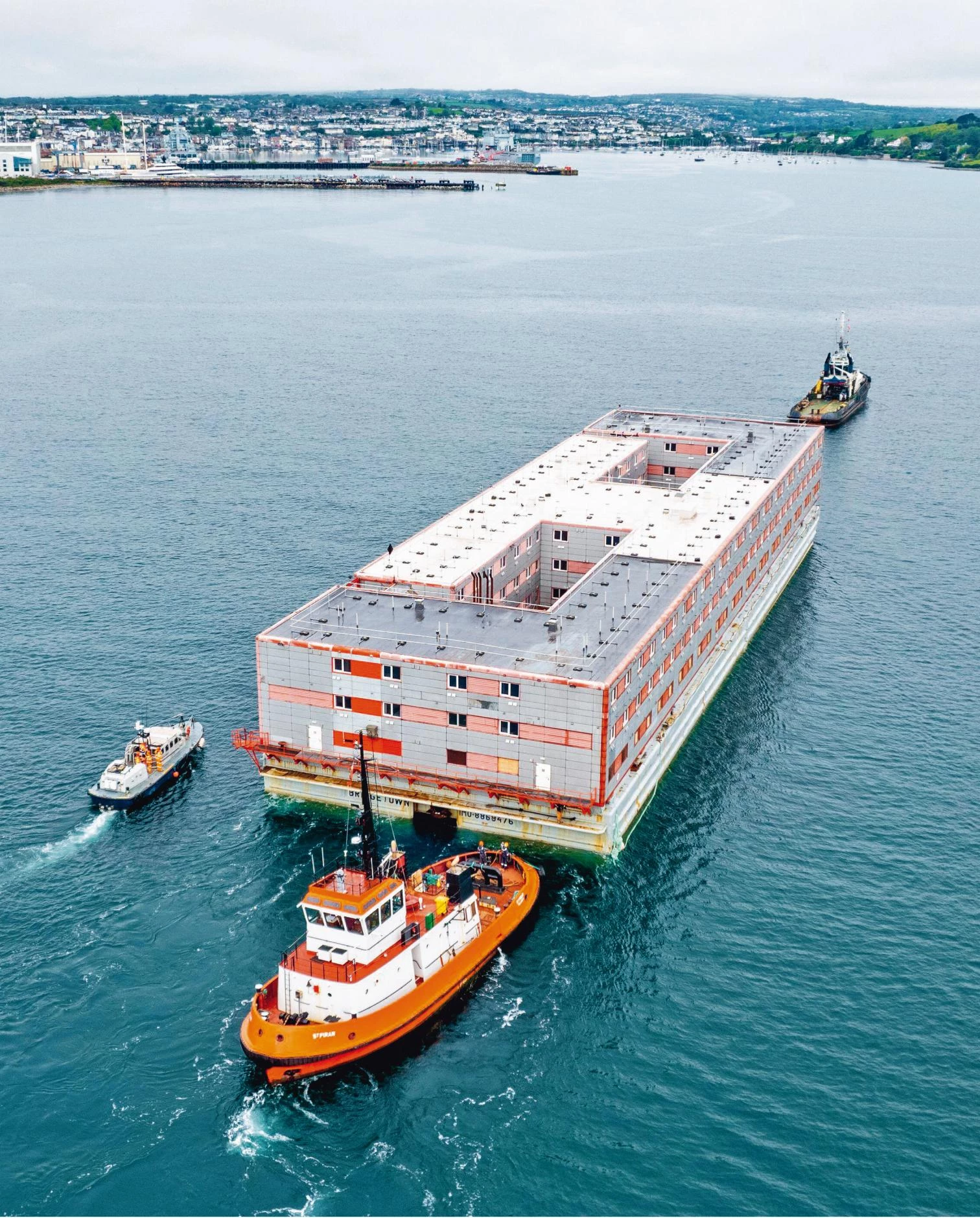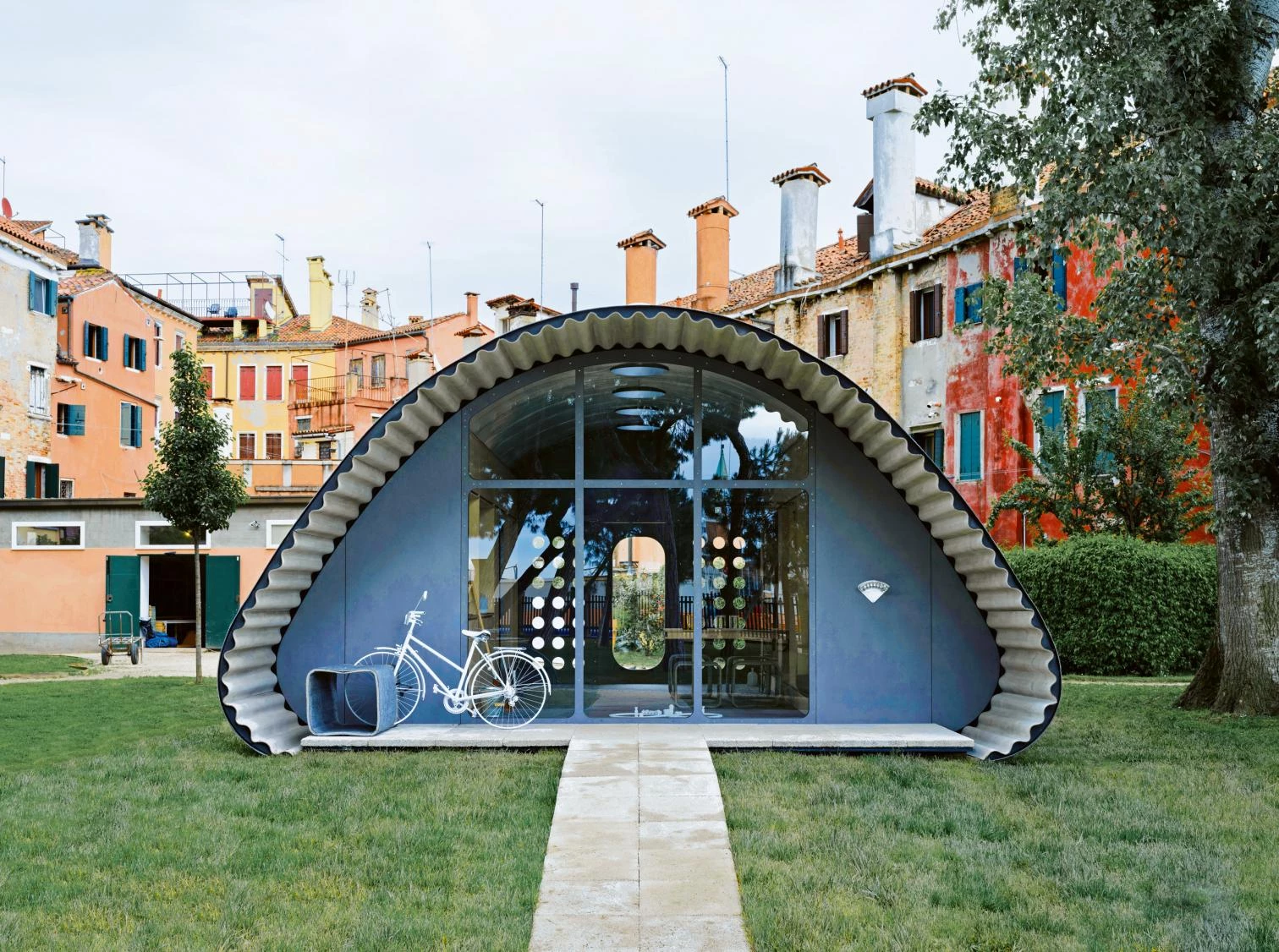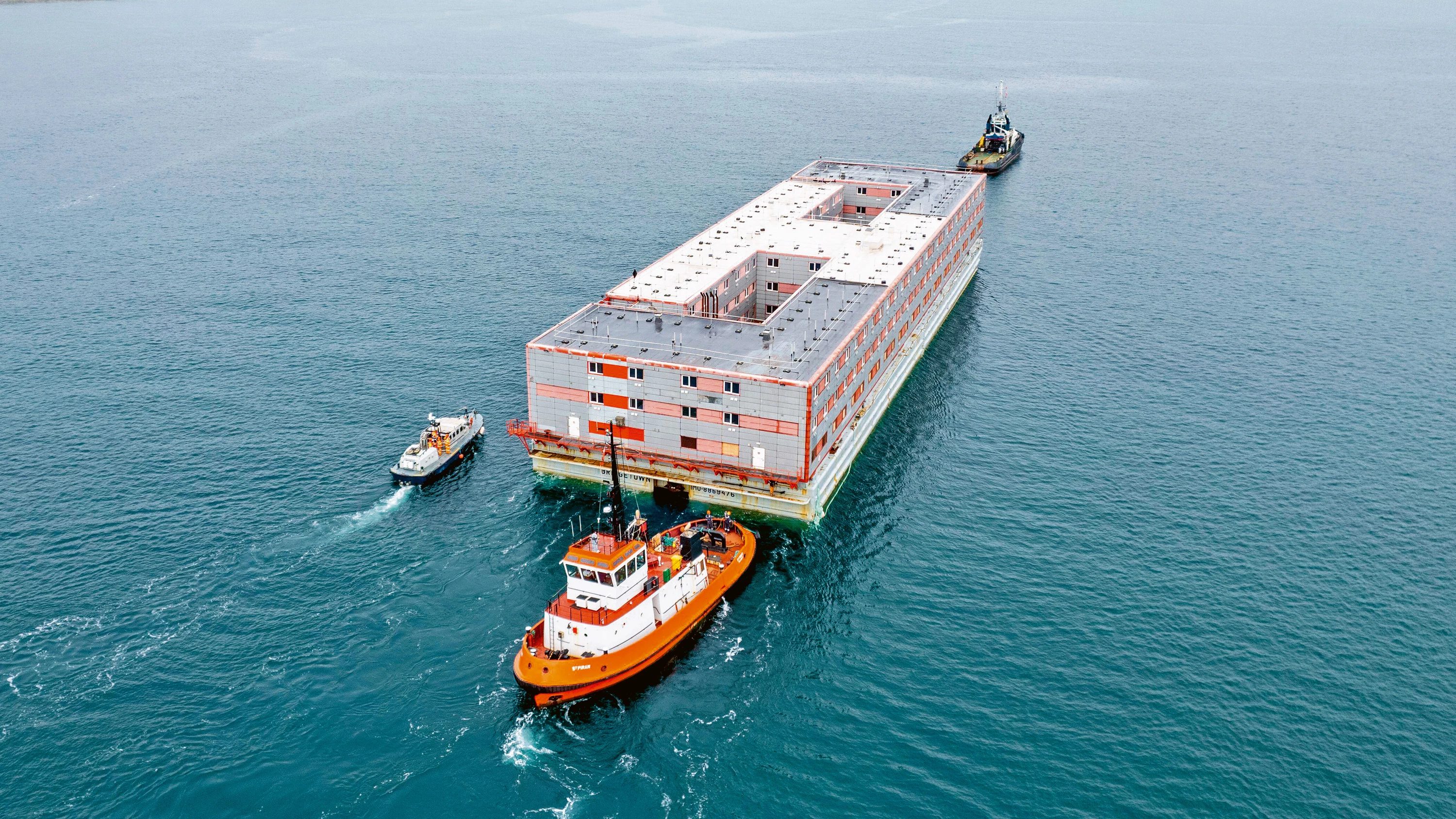
La barcaza Bibby Stockholm llegando al puerto de Falmouth (Reino Unido)
Fortress-Europe lodges migrants at sea. The Bibby Stockholm, a residential barge built in 1976 to be used as alternative accommodation, has become a symbol of the migratory crisis upon docking at a British port, coinciding with the approval by the government of Rishi Sunak of a law that hinders the reception of refugees. The United Kingdom is not the only country where the asylum system is under discussion. The members of the EU do not yet agree on the Pact on Migration and Asylum, because many of them suffer the impact of an illegal immigration that has increased after the pandemic, and the same happens in destinations like the US, with the endless drama of its southern border, or in Australia, which keeps asylum seekers on islands of the Pacific. However, the penitentiary boat brings to mind the dinghies of the Mediterranean or the boats of the English Channel where immigrants risk their lives fleeing war or misery, and which has turned this nautical caricature into an icon of a Europe that closes its door to these helpless multitudes.
Immigration is a huge challenge for rich nations, which need the workforce that their demography fails to supply but fear insecurity and cultural mutation. How to tackle this phenomenon is today a key issue in the European political agenda, in Germany or the Netherlands, in Italy or Greece, in Hungary or Poland, not to mention France, which is again experiencing the explosion of the banlieues. But along with these migratory flows we cannot forget those displaced by wars or catastrophes, often within their own countries or in nearby areas, and estimated at 100 million people. Usually housed in camps which are meant to be temporary but end up staying for years – this is precisely what motivated the design of the Essential Homes that Norman Foster presented at the Venice Biennale – the displaced population may increase significantly as a consequence of the frequent droughts, degradation of soil, or floods caused by climate change, which are already devastating subsistence agriculture in many regions of the planet.
The figures are not easy to calculate, but if the most apocalyptic forecasts state that with a 4ºC increase by 2100 the areas where 3.5 billion people live will have become inhabitable, the prospective Groundswell study of the World Bank predicts that in 2050, between 44 and 216 million will have become climate refugees. A good part of this movement will be from rural areas to cities, speeding up the urbanization process, which involves improved access to jobs, education, and health, besides cultural mutation and the reduction of fertility, but which also requires providing an infrastructure of schools, hospitals, transport, and accommodation. The architectural and urban challenge is after all as important as the political or social one, and if people displaced by conflicts, disasters, or climate deserve to be lodged in ‘essential homes’ that protect their daily lives, economic migrants and political asylum seekers should not be marginalized in floating lazarettos that, sadly, damage their dignity and shame their hosts.

Norman Foster Foundation, Essential Homes Research Project







